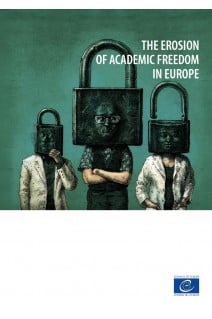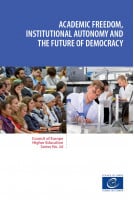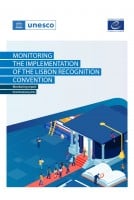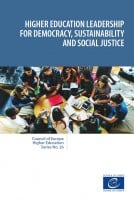FOREWORD EXECUTIVE SUMMARY AND PROPOSALS FOR ACTION CHAPTER 1 – INTRODUCTION
1.1. Background
1.2. The foundation of academic freedom
1.3. Conceptualisation of academic freedom
1.4. Academic freedom in Europe
1.5. Structure of report
CHAPTER 2 – LEGAL RESTRICTIONS ON ACADEMIC FREEDOM IN EUROPE
2.1. Introduction
2.2. Is the restriction legitimate or illegitimate?
2.3. Is the regulation active or passive?
CHAPTER 3 – POLITICAL INTERFERENCE IN ACADEMIC FREEDOM: A GLOBAL PERSPECTIVE
3.1. Introduction
3.2. Studies on political interference in different political systems
3.3. Characterisation of political systems
3.4. Political interference in liberal democracies
3.5. Political interference in electoral democracies
3.6. Political interference in electoral autocracies
3.7. Political interference in closed autocracies
3.8. Conclusions and limitations
CHAPTER 4 – POLITICAL INTERFERENCE IN ACADEMIC FREEDOM: A EUROPEAN PERSPECTIVE
4.1. Introduction
4.2. European multilevel governance arrangements
4.3. Forms of political interference
4.4. Political interference in academic freedom in Europe
CHAPTER 5 – ATTACKS ON DISSENTING VOICES IN ACADEMIA
5.1. Introduction
5.2. Self-censorship
5.3. Factors influencing internal attacks in academia
5.4. Attacks on dissenting voices in Europe
5.5. Countering the negative impact of internal pressure on academic freedom
CHAPTER 6 – CASES OF ONLINE HARASSMENT, ATTACKS AND DEFAMATION BY SOCIETY
6.1. Introduction
6.2. Background
6.3. Social media and academic freedom
6.4. Attacks by society on academic freedom in Europe
6.5. Countering the negative impact of external attacks on academic freedom
CHAPTER 7 – PRIVATE SECTOR INTERFERENCE IN ACADEMIC FREEDOM IN EUROPE
7.1. Introduction
7.2. Background
7.3. Private sector interference in academic freedom in Europe
7.4. Countering the potentially negative influences of private sector interference
CHAPTER 8 – RESTRICTIONS FROM EUROPEAN AND NATIONAL SECURITY POLICIES
8.1. Introduction
8.2. Background
8.3. The potential impact of restrictions on academic freedom
8.4. The impact of security policies on academic freedom
8.5. Counteracting the potentially negative influence of security policy
REFERENCES
Further reading
TABLES AND FIGURES
Table 1.1: General academic freedom score for Council of Europe member countries included in the Academic Freedom Index (update 2024 with 2023 scores)
Table 2.1. – Reports of legislation impacting academic freedom in Council of Europe member states
Table 2.2. – The findings of the various monitoring tools for the countries concerned
Table 3.1. – Forms of state repression
Table 3.2 – Key characteristics of political systems
Table 4.1. Forms of political interference in academic freedom in Europe
Figure 1.1: The onion model: The essential (orange) and supportive (blue) elements of academic freedom
Figure 2.1: The scope of analysing legislation (compiled by the author)
Figure 3.1: Soft and hard means of repression
Figure 3.2: Typical higher education policies of different stages of neo-nationalism







